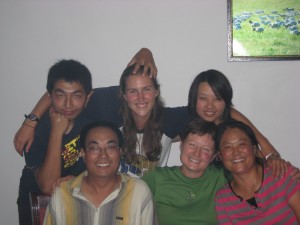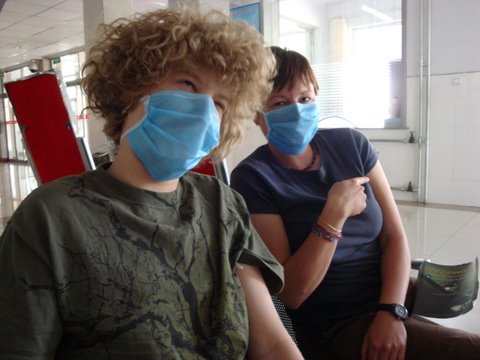Posted by Arianne:
Since I had limited internet and no blog access this summer, I’ve decided to post a “China recap” series illustrating some of the highlights from our summer at the field station in NE China. Photos to come soon!
At the end of May, I met Shuguang and the two undergrads who would be working with us for the summer (Kong Yuan and Fan Zhantou) in Beijing. We piled our gear into Shuguang’s jeep and drove about 9 hrs northwest to IMGERS (Inner Mongolia Grasslands Ecological Research Station). Jin Feng (the best grasshopper wrangler I’ve met) was there waiting. She lives in the nearby Village 12 and works with Team Grasshopper during the summers. During the next two weeks, Team Grasshopper put up field cages for my main experiment (investigating the effects of density and N-fertilization on migratory polyphenism in Oedaleus asiaticus), collected O. asiaticus to rear in cages on the BEF-ES plots (investigating the effects of plant functional group richness on grasshopper growth performance), and prepared the lab for upcoming experiments.
In mid-June, Colleen, an undergraduate supported in part by the ASU Parents’ Association, arrived to complete “Team Grasshopper.” We worked out the logistics for her project (investigating feeding preferences of O. a.) This was followed by a four-day frenzy where we sought to answer the question of whether green and black morphs of O.a. had similar preferences for the six most common plants and whether N-fertilization altered those preferences. It’s looking like N-fertilization had a strong effect, but we’re still sorting through the data.
On the BEF-ES plots, we surveyed the ambient grasshopper populations (via sweep nets) and collected grasshoppers from the cages for further analyses in Beijing and Arizona.
On the N-fertilized plots, the grasshoppers were growing along smoothly. Through cage surveys, we determine that density is influencing color — meaning that color is a plastic trait!
We did a few mark/recapture experiments using fluorescent powder and tracking the hoppers down at dark with a UV light. It looks like the black may disperse further than the green. This draws a crowd.
We looked at jump performance in 5th instar black and green O. a. We are finding that black grasshoppers are consistently heavier than green grasshoppers. Data I collected last summer suggests that this can be explained largely by an increased hind leg mass. These differing morphologies could translate into different locomotary capacities. This draws the largest stream of visitors asking what I’m doing chasing a hopper barefoot around the entryway to the office building (one of the few places big enough to put the jumping grid), all the while spouting bingo combinations (“A14”, etc) into a tape recorder.









